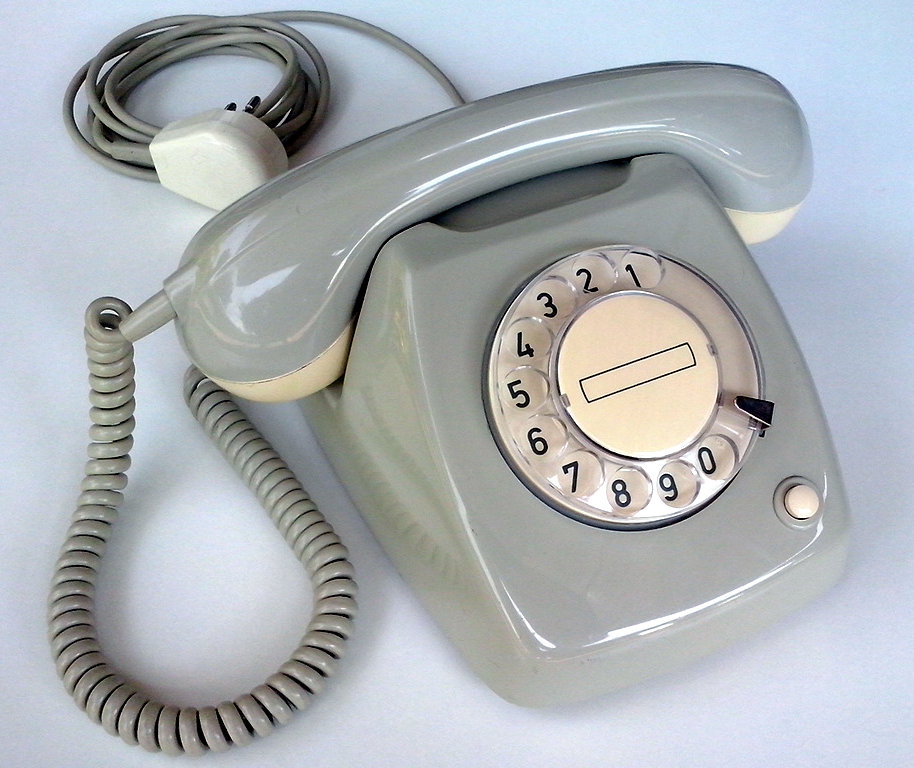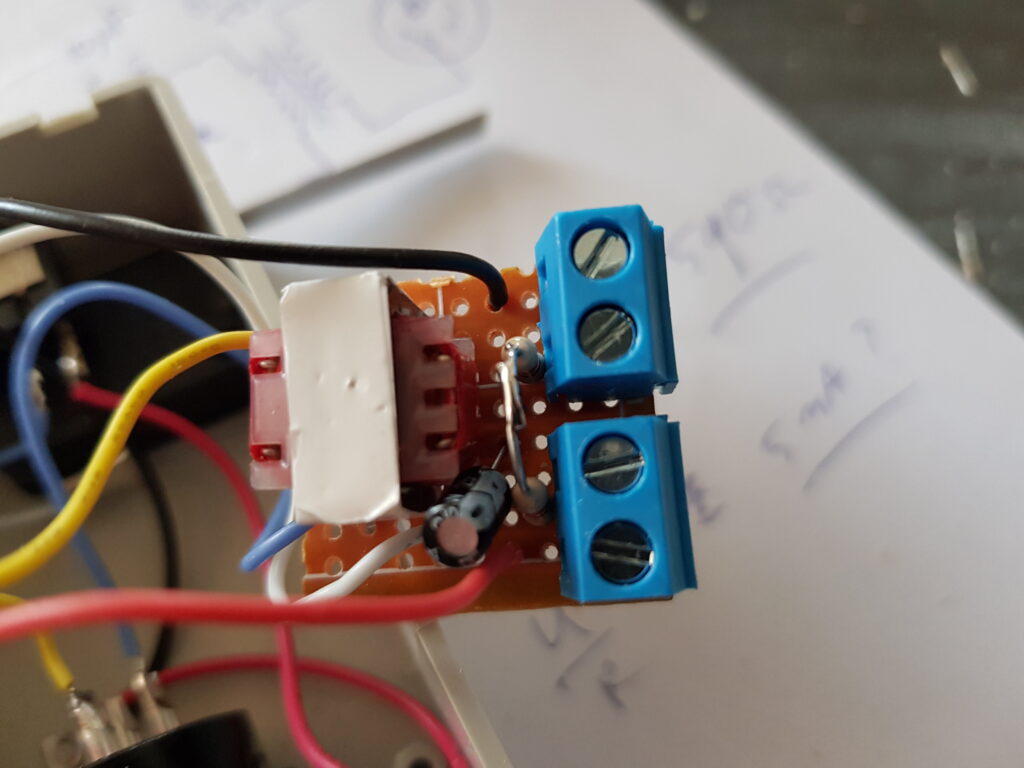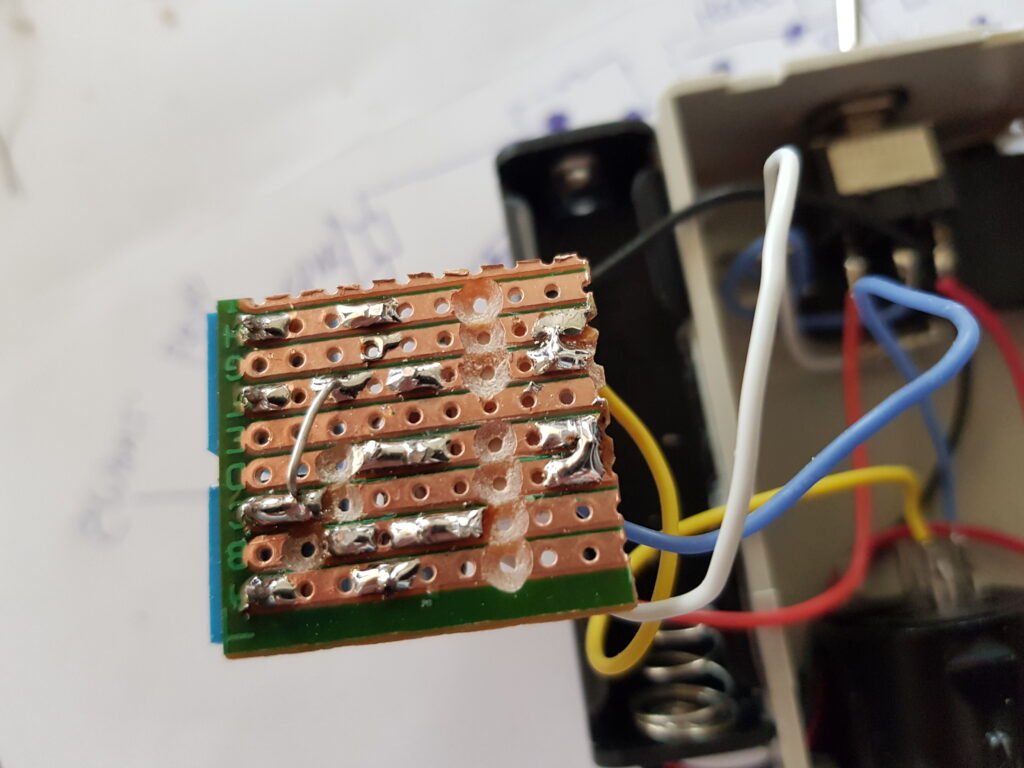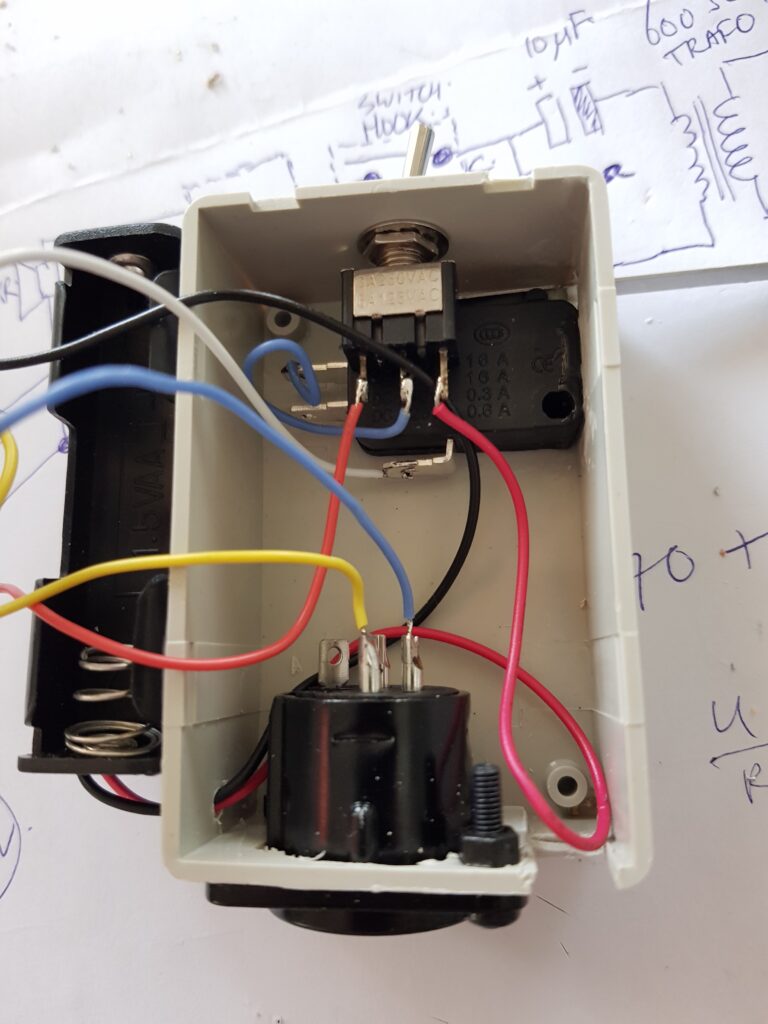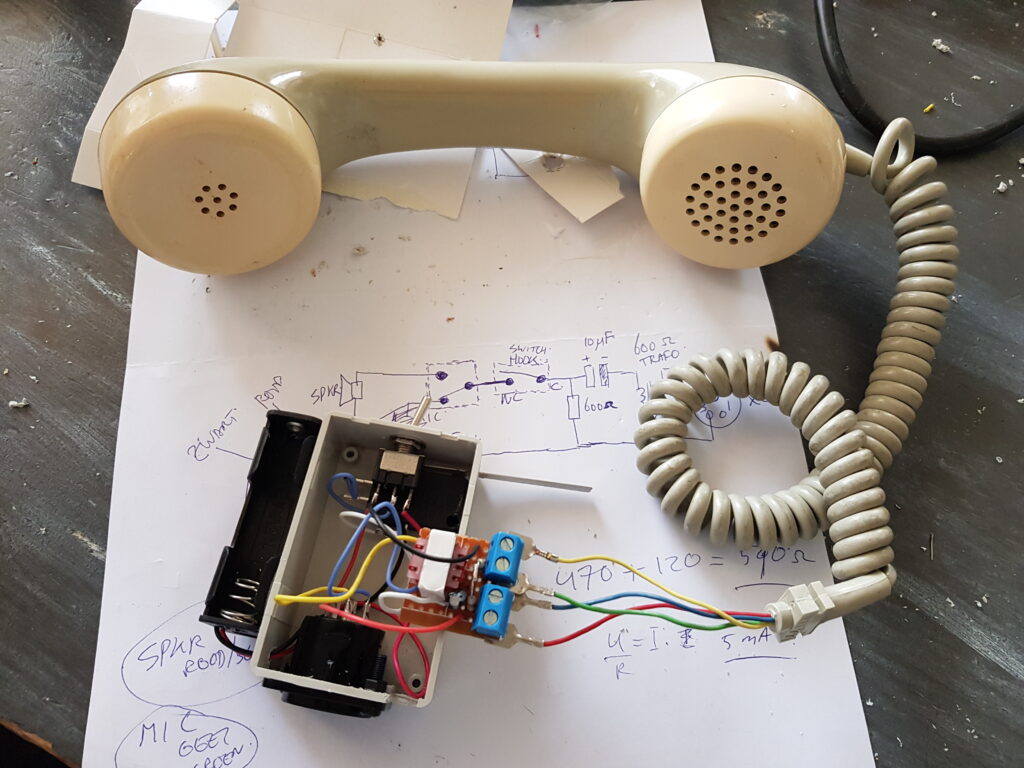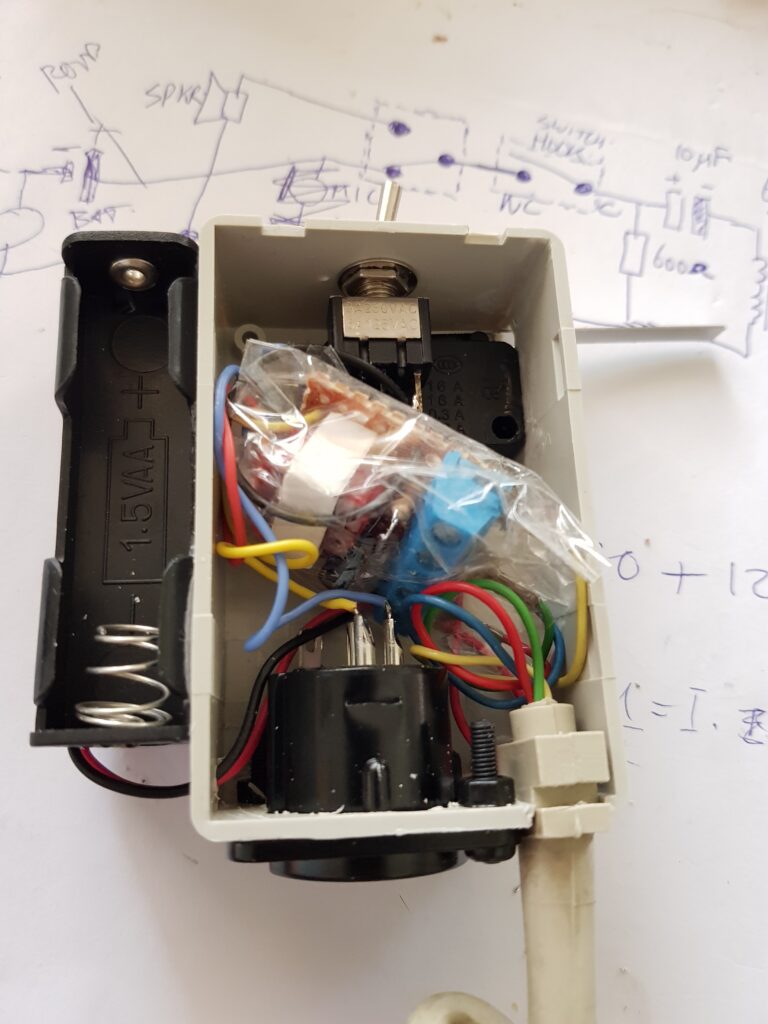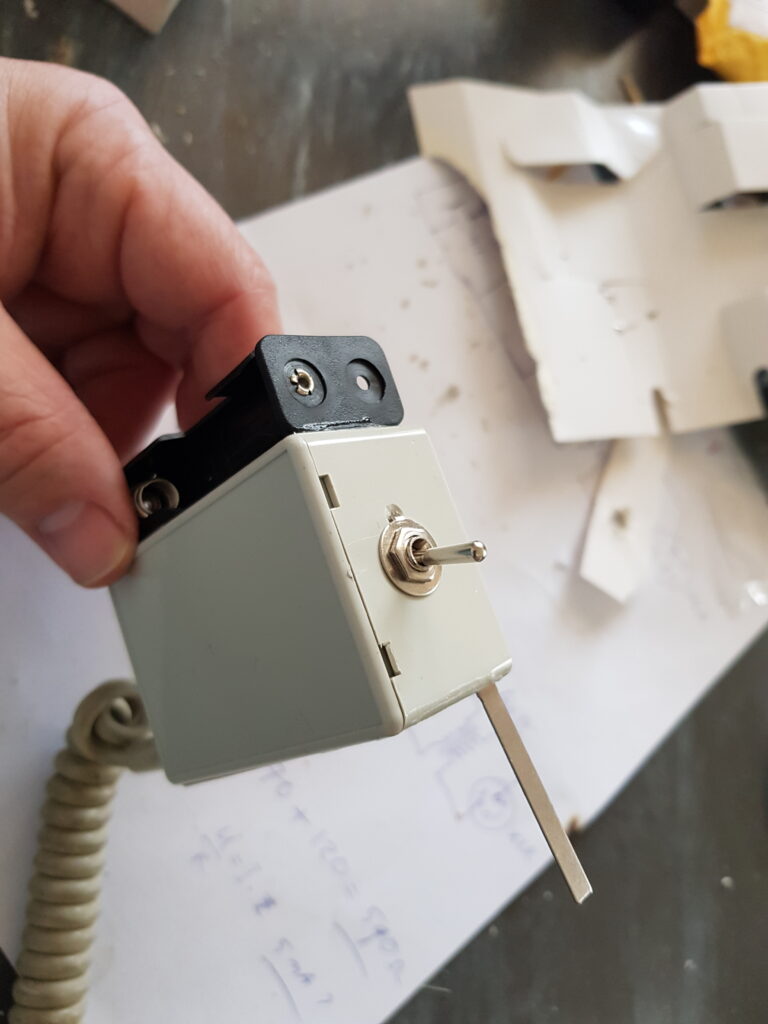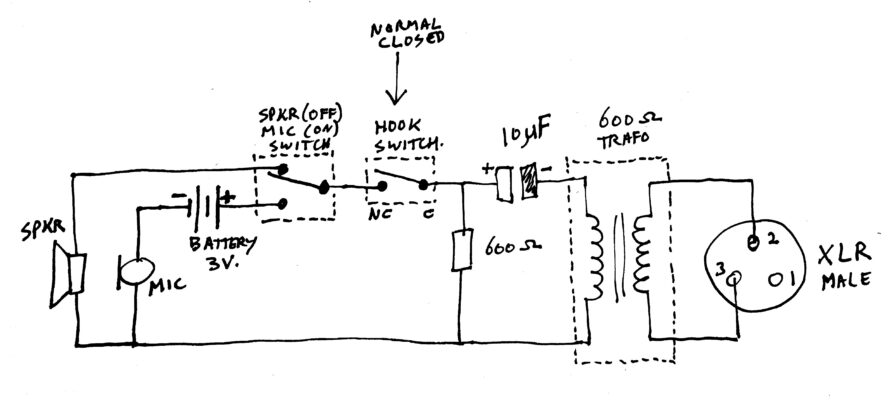
Telephone Microphone To XLR Conversion
My brother needed an old telephone handset to be connected to an audio amplifier, to use as microphone for his band. They were aiming for this old (fuzzy) telephone sound to use in one of their songs.
After a bit of searching, I came across some instructables (see references at bottom of page), and combined and simplified them a bit, and put the stuff together.
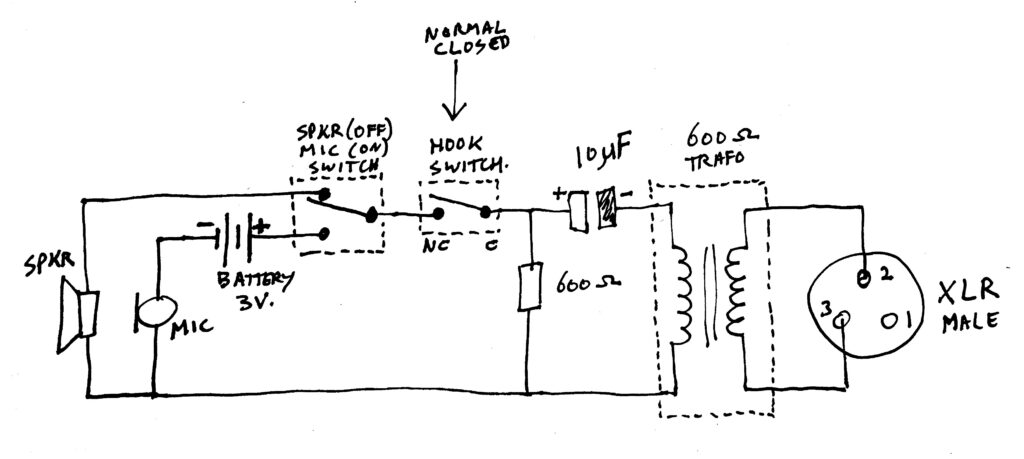
Parts list:
- XLR Male Connector, to connect to a “real” audio microphone cable.
- Small 600 Ohm Audio Transformer.
- 10 micro-farad electrolytic capacitor.
- 470 Ohm resistor, and 120 Ohm resistor, in series to make +/- 600 Ohm (OK, 590 = close enough). You can also just use a 1K resistor, instead of 600 Ohms.
- micro switch, with long lever, to use as “hook switch”.
- one dual pole mini switch, to choose between using the real microphone, or use the speaker as microphone.
- one battery holder to fit 2 AA batteries (but maybe we could have done with a single AA).
- two terminal blocks with screw connectors, to connect the handset wires to.
- a small project box, to put “the project” in.
Here some build images, using a standard printed circuit board, no special design. Just used a drill bit to disconnect some of the traces. The resistors are a bit hard to see. They stand straight up (between the blue terminal blocks and transformer), and are connected to each other at the top.
To make it possible to hang up the phone, I made a prototype cardboard “hook” template. For a bit more robust usage, this can be made out of some wood or plastic.
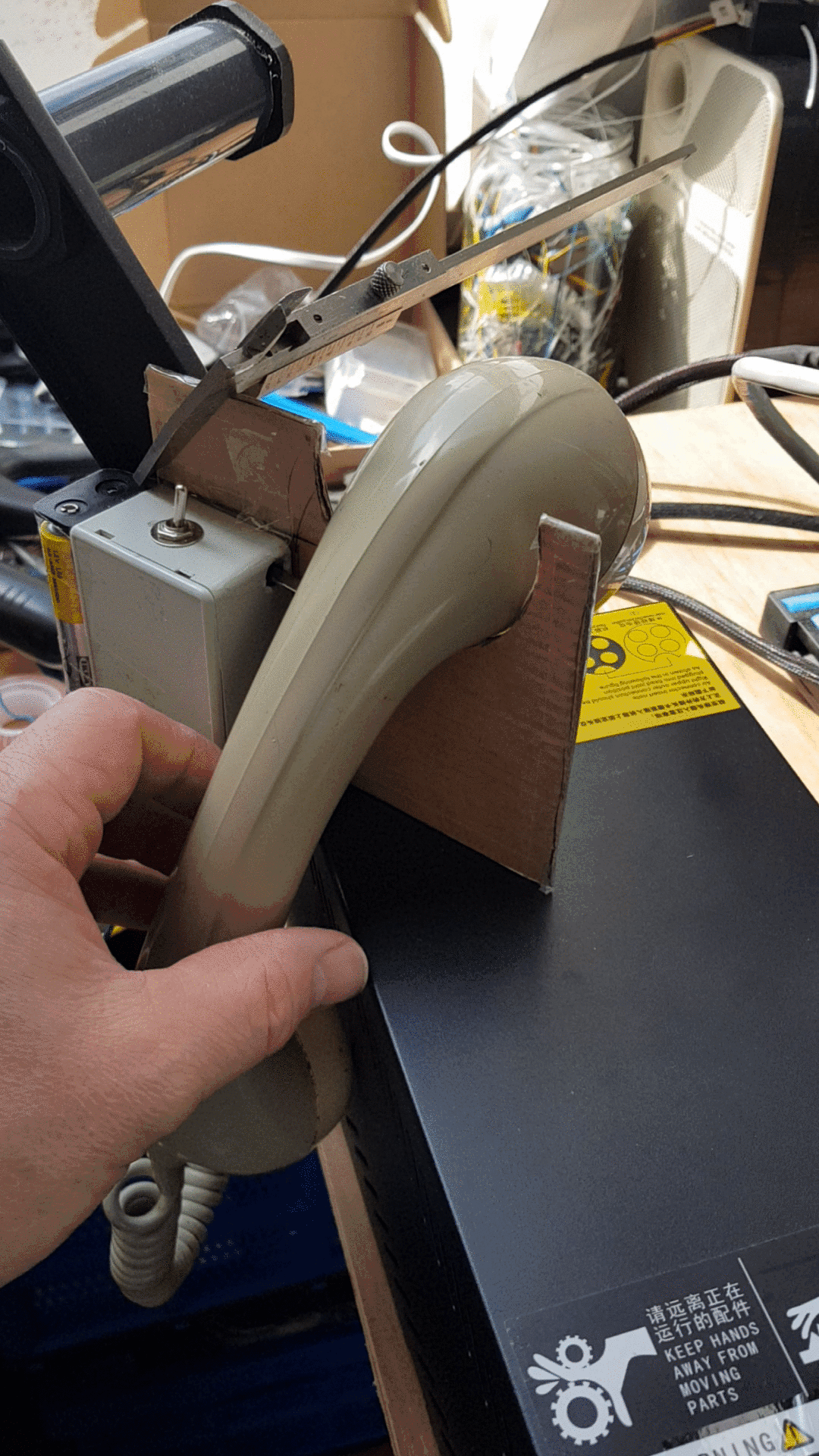
And of course a small test – not recorded via line-in, but just using a mobile phone:
What is missing from this design, is a volume knob… The active carbon microphone circuit is giving quite some output, which could use some trimming. As first option, you can try using a single AA battery, to go down to 1.5 volt, instead of using 3 volts. If that does not help enough, then a potentiometer needs to be added in the circuit. This could be done for example like this (I have just re-drawn the middle of the image, you need to add the left and right sides of the original circuit also):
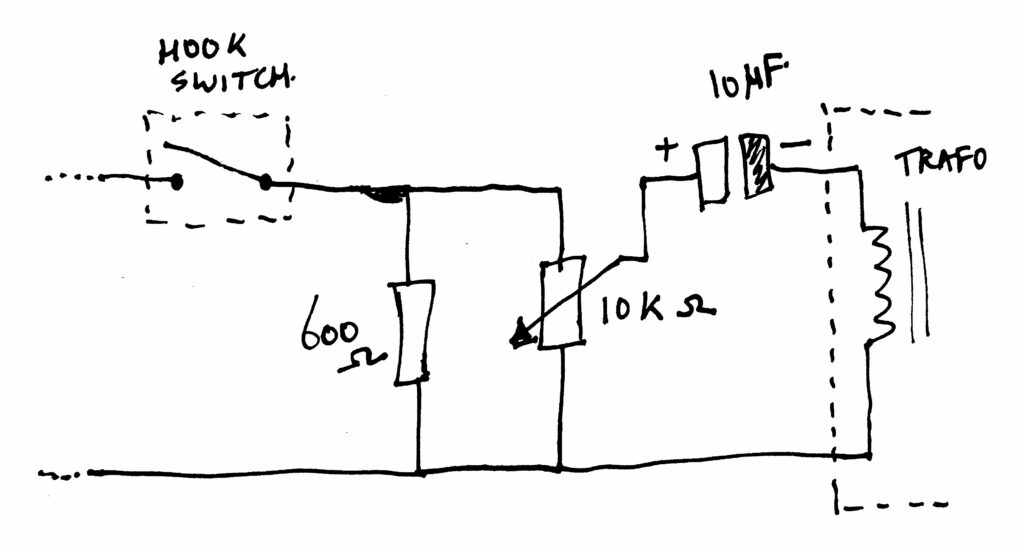
And lastly, the links to the instructables which were used as inspiration:
- https://www.instructables.com/Balanced-Microphone-From-An-Old-Telephone/
- https://www.instructables.com/Balanced-Microphone-from-Telephone-Headset-Speaker/
